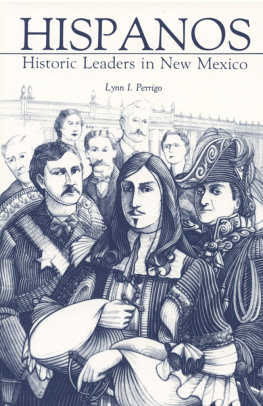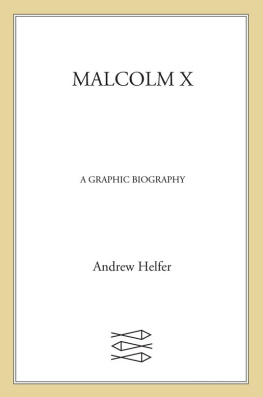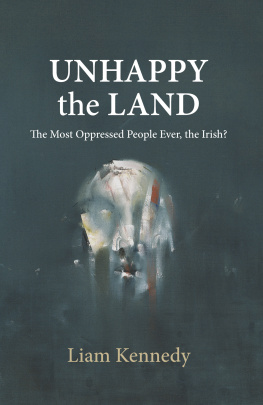Advocates for the Oppressed
Other Books by Malcolm Ebright
Four Square Leagues: Pueblo Indian Land in New Mexico
(with Rick Hendricks and Richard W. Hughes)
The Witches of Abiquiu: The Governor, the Priest, the Genzaro Indians, and the Devil (with Rick Hendricks)
Land Grants and Lawsuits in Northern New Mexico
Spanish and Mexican Land Grants and the Law (edited by Malcolm Ebright)
The Tierra Amarilla Grant: A History of Chicanery
Advocates for the
Oppressed
Hispanos, Indians, Genzaros, and
Their Land in New Mexico
MALCOLM EBRIGHT
2014 by Malcolm Ebright
All rights reserved. Published 2014
Printed in the United States of America
First paperbound printing, 2015
Paperbound ISBN: 978-0-8263-5197-5
20 19 18 17 16 15 1 2 3 4 5 6
THE LIBRARY OF CONGRESS HAS CATALOGED THE PRINTED EDITION AS FOLLOWS:
Ebright, Malcolm.
Advocates for the oppressed : Hispanos, Indians, Genzaros, and their land in New Mexico / Malcolm Ebright.
pages cm
Includes bibliographical references and index.
ISBN 978-0-8263-5505-8 (cloth : alk. paper) ISBN 978-0-8263-5506-5 (electronic)
1. Land tenureNew MexicoHistory18th century. 2. Land grantsNew MexicoHistory18th century. 3. Legal assistance to IndiansNew MexicoHistory18th century. 4. Indians of North AmericaLand tenureNew MexicoHistory18th century. 5. Pueblo IndiansLand tenureHistory18th century. I. Title.
HD211.N6E37 2014
333.30978909033dc23
2014001547
is a revised version of an essay that appeared as Advocates for the Oppressed: Indians, Genzaros, and Their Spanish Advocates in New Mexico, 17001786, in New Mexico Historical Review 71, no. 4 (October 1996): 375408. Copyright 2010 by the University of New Mexico Board of Regents; reprinted by permission with all rights reserved.
is a revised version of an essay that appeared as A City Different Than We Thought, Land Grants in Early Santa Fe, 15981900, in All Trails Lead to Santa Fe: An Anthology Commemorating the 400th Anniversary of the Founding of Santa Fe (Santa Fe, NM: Sunstone Press, 2010), 6595, and it is reprinted by permission.
is a revised version of an essay that appeared as Breaking New Ground: A Reappraisal of Governor Vlez Cachupn and Mendinueta and Their Land Grant Policies, in Colonial Latin American Historical Review 5, no. 2 (1996): 195223, and it is reprinted by permission.
is a revised version of an essay that appeared as Frontier Land Litigation in Colonial New Mexico: A Determinant of Spanish Custom and Law, in Western Legal History 8, no. 2 (Summer/Fall 1995): 199226, and it is reprinted by permission.
Partial Funds for the research and writing of earlier versions of were provided by the New Mexico Historical Records Advisory Board.
CHAPTER AND COVER ILLUSTRATIONS BY Glen Strock
MAPS BY Molly OHalloran; maps are based on research by Roberto Valdez
(except for the Pueblo Grazing Grants map)
Carisa Williams Joseph
Dedicated to the memory of Carisa Williams Joseph
for her dedication, courage, and research excellence.
INTRODUCTION AND ACKNOWLEDGMENTS
In the historical struggle for precious land and water in New Mexico, the outcome of a dispute often depended on which party had the strongest advocate arguing their case before a local tribunal or on appeal. This book is about the advocates who represented the parties to these disputes and about the Hispanos, Indians, and Genzaros (Hispanicized nomadic Indians) themselves and the land they lived on and fought for. Often the best advocates were not lawyers at all but government officials such as alcaldes and the governors themselves, governors like Toms Vlez Cachupn.
The Spanish office of Protector de Indios, highlighted in
tells the story of two mostly mythical land grants in early Santa Fe that were created by nineteenth-century lawyers who stood to gain if the claims were confirmed by the courts. This chapter illustrates how easily history was distorted in a way that impedes any effort to find the real truth about early Santa Fe and early New Mexico. Although the four hundredth anniversary of the founding of Santa Fe in 1610 was recently observed, scholarly debate continues about basic questions, such as the exact date and circumstances of Santa Fes founding, why the present location was chosen, and whether there was a settlement of Mexican Indians in the Analco region at the time of the villas founding. Unfortunately, the lawyers involved in the claims for the Santa Fe grant and the Cristbal Nieto grant did more to obfuscate than to illuminate historical truth. The Santa Fe grant was claimed initially by land speculators on the theory that the Villa of Santa Fe was given a formal grant of four square leagues (the same amount of land to which an Indian pueblo was entitled), either by a written grant or by virtue of royal law. This idea turned out to be a myth, which the courts rejected, leaving land titles in Santa Fe in chaos for a few years in the early twentieth century.
The other myth covered in also goes beyond these two mythical grants to paint a picture of the people and the land of early Santa Fe that reveals a city different than we thought.
Many people are unaware that New Mexico pueblos received their own grazing grants to protect their traditional grazing lands from encroachment and to provide pasture for their own animals.
, were important pre-revolt pueblos whose lands, after they were abandoned, were coveted and fought over by some of the wealthiest Hispano families in New Mexico. Some, such as Jos Riao and Juan Pez Hurtado, also had houses in the Villa of Santa Fe. Both La Cinega and Cieneguilla Pueblos took part in the Pueblo Revolt, but by the time Diego de Vargas passed through on his way to Santa Fe during the reconquest of New Mexico, they had been abandoned. Vargas offered La Cinega Pueblo five hundred varas of land in each direction if the Indians would return and claim it, but they did not reclaim their land, thus leaving a substantial amount of prime irrigated farmland available for enterprising Spaniards in the area.
The history of La Cinega and Cieneguilla Pueblos and their lands illustrates how Hispano elites were able to take over former Pueblo lands and expand their holdings. They claimed property within these pueblos with vague or nonexistent boundaries and then conveyed it to family members, providing more definite (and expanded) boundaries in the new deed. The Hispanos who acquired this land, some of whose ancestors were encomenderos with the right to collect tribute from La Cinega Pueblo, battled for control of these valuable tracts of irrigable land for the next three centuries, often attempting to keep the land within their families by avoiding sales to outsiders. When such sales did take place, traditional methods of farming and village culture were often disrupted. Now, a major portion of the wealth of La Cinega is in its water rights, among the oldest and most expensive in New Mexico.









